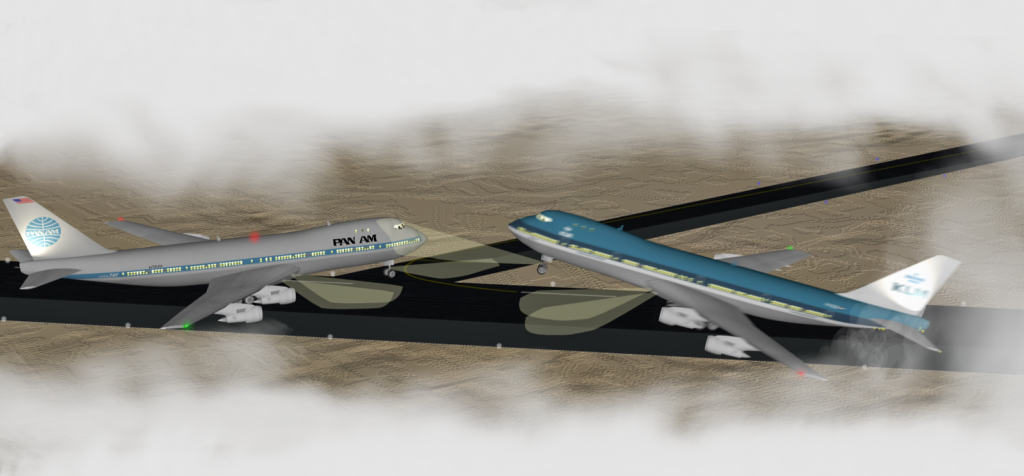The 27th of March 1977 is a day that will never be forgotten in the aviation industry. It was on this day that the deadliest aviation accident in history occurred in Tenerife, taking the lives of 583 people.
The accident occurred at Tenerife’s Los Rodeos Airport (now Tenerife North Airport) and involved two Boeing 747 aircraft operated by KLM and Pan American World Airways (PanAm).
The KLM flight, KLM 4805, was scheduled to fly from Amsterdam to Las Palmas, Spain, with a stopover at Tenerife.
The PanAm flight, PanAm 1736, was flying from Los Angeles to Las Palmas, with a stopover at Tenerife. Due to a bomb explosion at Gran Canaria Airport earlier that day, many flights were redirected to Tenerife, which led to congestion at the airport.

Both aircraft were parked at the airport waiting for clearance to take off. The KLM flight was scheduled to depart first, but due to the congestion, it was delayed.
The pilots were anxious to leave and decided to start taxiing to the runway without proper clearance from air traffic control.
As the KLM flight was taxiing, the PanAm flight was also given clearance to taxi to the runway. The PanAm flight was required to cross the same runway that the KLM flight was on, and as they did so, the KLM captain mistakenly thought that he had been given clearance for takeoff.
As a result, flight KLM 4805 began to accelerate down the runway on its takeoff roll.
[monsterinsights_popular_posts_inline]
The PanAm captain saw the KLM plane coming towards them and tried to turn off the runway, but at that point it was too late to take avoiding action.
The KLM aircraft, now travelling at high speed, collided with the PanAm plane at over 200 miles per hour. The KLM flight’s nose went under the PanAm plane’s fuselage, and the KLM’s engines sliced through the PanAm’s upper deck, causing the PanAm Boeing 747 to burst into flames.


The KLM 747 also caught fire and exploded, killing all 248 passengers and crew on board. The PanAm flight had 335 passengers and crew on board, of which only 61 survived.
The Tenerife disaster was a result of a combination of factors, including miscommunication between the pilots and air traffic control, congestion at the airport, and fatigue of the pilots.

The KLM captain, who was one of the most experienced pilots in the industry, had been on duty for over 12 hours at the time of the accident, which is a violation of industry regulations.
The aftermath of the accident led to significant changes in aviation safety procedures, including standardizing cockpit procedures and requiring clearer communication between pilots and air traffic control.

The disaster also led to the implementation of Crew Resource Management (CRM), a training program designed to improve communication and decision-making skills among flight crews.
The Tenerife disaster remains the deadliest accident in aviation history, and it serves as a reminder of the importance of following established procedures, clear communication, and adhering to industry regulations.

The Tenerife disaster was a tragic event that shook the aviation industry to its core. It serves as a sobering reminder of the importance of safety in aviation and the need to constantly review and update safety procedures.
The legacy of the Tenerife disaster lives on in the aviation industry, as the lessons learned from the accident continue to shape the industry’s approach to safety.










